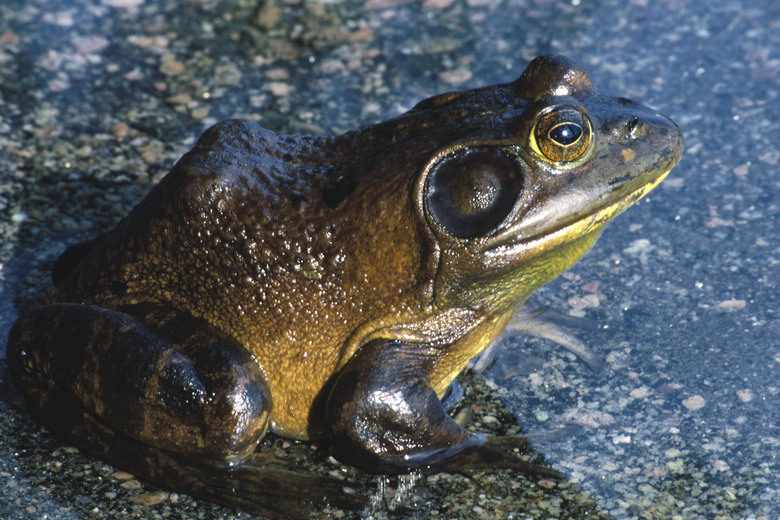How To Build A Frog Trap
The easiest way to trap a frog is through the use of a drift fence. Many scientists or hobbyists use drift fences to study various animals in an area. For this trap, the fence will be a board that will create a block in a frog's path, at which point it will move along the board in an attempt to get around the blockade. The frog will continue moving until it falls into a bucket placed in the ground at either end of the board, thus trapping it until you return to check on the trap.
Step 1
Use the hammer and nail to poke several small holes on the bottom of each bucket so that water does not fill the bucket in the event of rain. Make one 4-inch deep slot on the rim of each bucket. The slot should be the same width as the thickness of the plywood.
Step 2
Select an area to set your trap. Dig a hole the size of one of your buckets and place the bucket inside. Adjust the hole's depth so that the bucket's rim is even with the ground. Fill the area around the bucket with dirt so there are no gaps.
Step 3
Start at the spot where the slot on the embedded bucket is and dig a trench 4 inches deep. Make the length of the trench a few (around 3 or 4) inches shorter than the length of the plywood.
Step 4
Dig another hole at the end of the trench and place the second bucket in the hole as in Step 2. Rotate the bucket so that the slot is aligned with the trench.
Step 5
Place the plywood in the trench so that it stands upright and rests in the slots on each bucket. Fill the trench up around the plywood for more support. If necessary, hammer in stakes along the plywood to help stabilize it. Leave the trap overnight and check it in the morning for frogs.
Things Needed
- Shovel
- Two 5-gallon plastic buckets
- Plywood board
- Knife or wire cutter
- Hammer
- Nail
- Stakes (optional)
TL;DR (Too Long; Didn't Read)
Try to select and use an area that has been verified to have many frogs. Areas near ponds, streams, rivers and lakes are ideal. Any bucket size is OK, but larger buckets are better to ensure the frog doesn't escape. You can place lights near the buckets at night to attract frogs to your trap's location.
Warning
Animals other than frogs may fall into the trap. Use caution when handling unknown animals. Don't leave the trap unattended for long periods of time, as animals that fall in are susceptible to starvation or death by overexposure to weather elements.
References
Cite This Article
MLA
Whiting, Dyna. "How To Build A Frog Trap" sciencing.com, https://www.sciencing.com/build-frog-trap-5872836/. 24 April 2017.
APA
Whiting, Dyna. (2017, April 24). How To Build A Frog Trap. sciencing.com. Retrieved from https://www.sciencing.com/build-frog-trap-5872836/
Chicago
Whiting, Dyna. How To Build A Frog Trap last modified March 24, 2022. https://www.sciencing.com/build-frog-trap-5872836/
